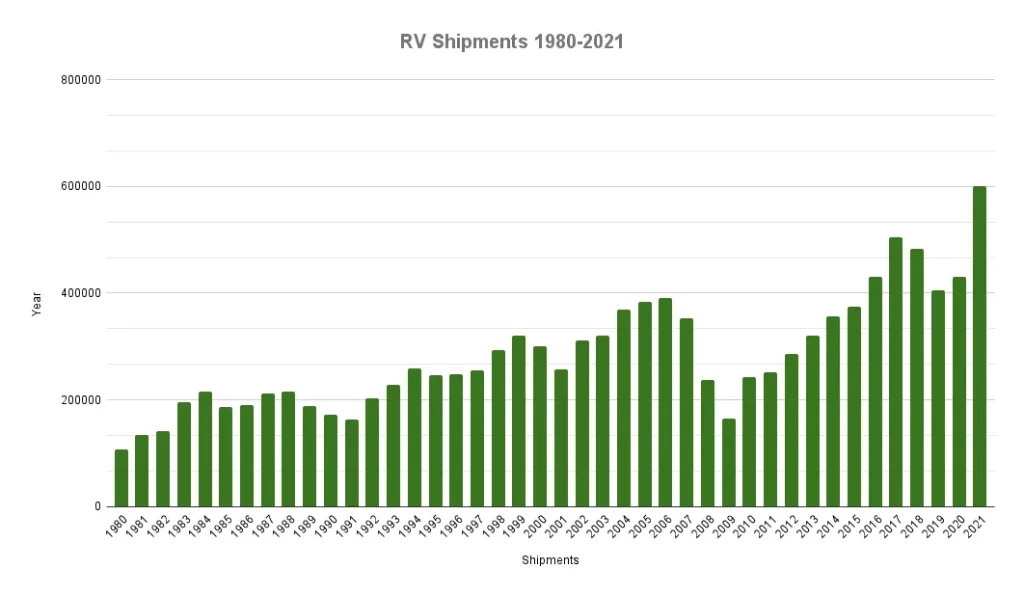As a marketing professional stats and numbers interest me. So I thought I’d try to collate the vanlife statistics. The takeaway is that more people are traveling in RVs and enjoying the great outdoors.
RV wholesale shipments are projected to top 549,000 units by year-end 2022, according to the Summer 2022 issue of RV RoadSigns, the quarterly forecast prepared by ITR Economics for the RV Industry Association.

(Source: RV Industry Association)
The hashtag #vanlife has been used over 13 million times on Instagram.
Economic Impact of the RV Industry
A study revealed of the RV industry has an overall annual economic impact on the US economy of $140 billion, supporting nearly 680,000 jobs, and paying more than $48 billion in wages. This is a 23% increase in economic output in the past three years.
- $73.7 billion by RV manufacturers and suppliers
- $35.7 billion by RV campgrounds and related travel
- $30.5 billion by RV sales and service activities
(Source: RV Industry Association)
One of the most interesting vanlife statistics is that approximately 1 million Americans live in recreational vehicles full-time. RV ownership has grown from 7.9 million households in 2005 to over 9 million today. More than 50% of RVers take their pets away with them. Over 40 million Americans regularly go RVing, with over 25 million RVing a year. The average RV owner is male and 38-55, however, there is a rise in solo female RVers. 38% of the 40 million people who own a recreational vehicle are Millennials.
(Source: Condor Ferries)
- In 2021, more than 93.8 million North American households considered themselves campers.
- Camping accounted for 40% of all leisure trips taken in 2021 with more than half of travelers (53%) including camping in some or all of their travel.
- A new trend, urban residents are one of the most avid camping segments – 44% of this group plan to replace a leisure trip with a camping trip in 2022.
- RVing is at an all-time high, with 11 million RV owners camping last year, and two million new RV renters in 2021.
- In 2021, 54% of new campers who had at least one camping experience came from non-white groups.
Source: (KOA North American Camping Report)

